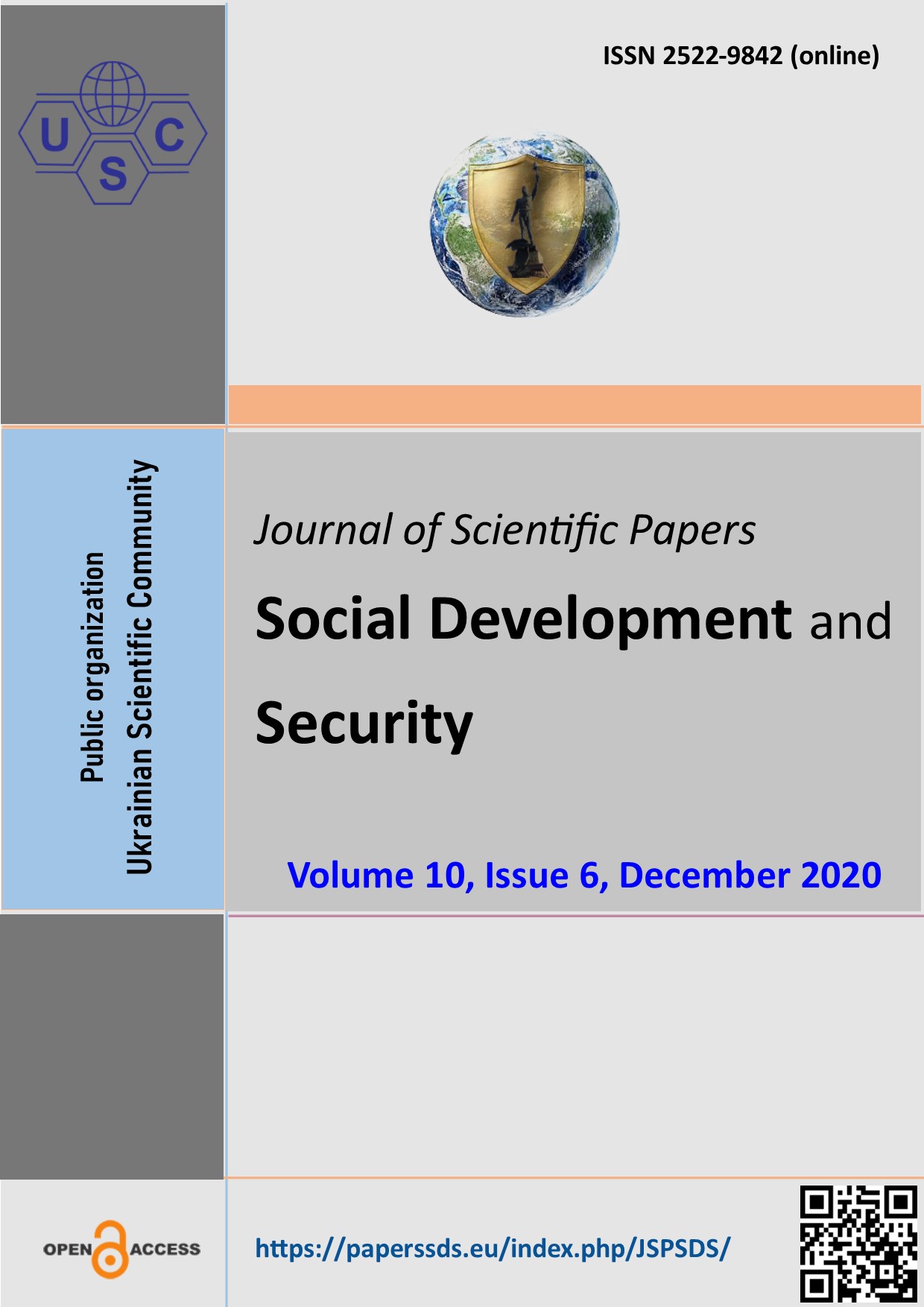Non-governmental organizations social-economic security partnership policy
Abstract
The purpose of this article is to present the importance of NGO partnerships within civil society. The idea of partnership has become a megatrend in the modern world, which seems to permeate various areas of social, economic, military and even family life. There are three main values that form the foundation of NGO partnerships in the field of security: trust, cooperation and reciprocity. Building pro-social concepts in the area of security, which will be embedded in a model based on the above-mentioned values. They are a supported search of the literature and practice of the plane for due development of new concepts, but also a place for open minds. It can therefore be concluded that the NGO acts as a bridge in the structure of the socioeconomic security system. Creating and enabling organizations to connect and enable them to achieve specific tasks and goals also creates new conditions for improving partnership networks. The organization of research work for the following text was based on the analysis of legal acts related to the objectives of sustainable development, the literature on the subject and documents resulting from the practice of economic life
Downloads
References
Apanowicz J. (2002) Metodologia ogólna. Gdynia: Wydawnictwo “Bernardinium”, p. 72.
Aronson E. (1999) Człowiek istota społeczna. Warszawa: PWN, p. 357.
Bianchi, P.G. (2009) Duchowość i zrządzanie czyli reguła św. Benedytka w strategii przedsiębiorstw. Kraków: TYNIEC Wydawnictwo Benedyktynów, pp. 109-110.
Błaszczuk, D.J., Fazlagić, J., Skikiewicz, R. (2017) Zaufanie i kapitał społęczny w polskim biznesie. Warszawa: Wydawnictwo AFiB Vistula, p. 36.
Ciupka, S. (2020) The stability of the world image in creating a global sense of security. Scientific Journal of Bielsko-Biala School of Finance and Law, 24(2), pp. 5-9. DOI: 10.5604/01.3001. 0014.3278.
Homans, G. C. (1961) Social behavior: Its elementary forms. New York: Harcourt, Brace, & World.
Merton, R. K., (2002) Teoria socjologiczna i struktura społęczena. Warszawa: PWN, p.203.
Report of ILO (2004) – Economic security for a better world. Geneva: International Labour Office, ISBN 92-2-115611-7
Sheen, F. J. (2017) Warto żyć! Kraków: Wydawnictwo Elpil, p. 306.
Śliwerski B. (2015) Współczesne teorie i nurty wychowania. Kraków: Impuls, p.312.
Słowniki PWN. Available from: https://sjp.pwn.pl/slowniki/integracja.html
Szołtysek, A.E. (2013) Filozofia edukacji. Kształtowanie umysłu. Kraków: Impuls, pp.157-162.
Uzoma, A., Adetiloye, K. A.; Esther A., Eke P. and Godswill O. O. (2020). Social integration and financial inclusion of forcibly displaced persons in Sub-Saharan African countries. Problems and Perspectives in Management, 18(3), 170-181. DOI: 10.21511/ppm.18(3).2020.15
Wziątek-Stasko, A. (2012) Diversity management. Narzędzie skutecznego motywowania pracowników. Warszawa: Difin.
Yarova, I., Mishenia H., (2018) Socio-ecological and economic content of development of human resources and labor motivation in the system of spatial forestry organization [in:] Human Capital Management. Innovative aspects of transformational economies. Ruda Śląska: Omnidium, pp. 18-19.
Zharova, L. (2020) Sustainable development of territories in the framework of smart initiatives. Scientific Journal of Bielsko-Biala School of Finance and Law, 23(4), pp. 61-65. DOI: 10.5604/01.3001.0013.6826.
Abstract views: 409 PDF Downloads: 339
Copyright (c) 2020 Aleksander Sapiński, Sabina Sanetra-Półgrabi, Anna Nastuła

This work is licensed under a Creative Commons Attribution 4.0 International License.
The authors agree with the following conditions:
1. Authors retain copyright and grant the journal right of first publication (Download agreement) with the work simultaneously licensed under a Creative Commons Attribution License that allows others to share the work with an acknowledgment of the work's authorship and initial publication in this journal.
2. Authors have the right to complete individual additional agreements for the non-exclusive spreading of the journal’s published version of the work (for example, to post work in the electronic repository of the institution or to publish it as part of a monograph), with the reference to the first publication of the work in this journal.
3. Journal’s politics allows and encourages the placement on the Internet (for example, in the repositories of institutions, personal websites, SSRN, ResearchGate, MPRA, SSOAR, etc.) manuscript of the work by the authors, before and during the process of viewing it by this journal, because it can lead to a productive research discussion and positively affect the efficiency and dynamics of citing the published work (see The Effect of Open Access).
















